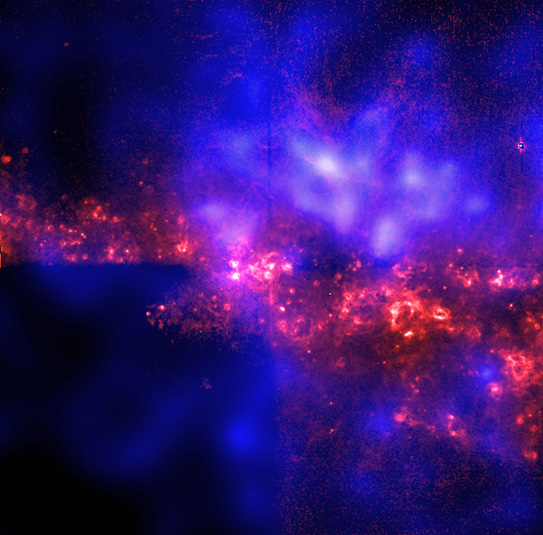
ASTR 5110 (Atomic and Molecular Processes)
Instructor: Prof Michael Shull ASTROPHYSICAL AND PLANETARY SCIENCES
Fall 2017 (MWF: 9:00 am - 9:50 am)
(michael.shull@colorado.edu)
Atomic and Molecular Processes: Fall 2017
Course Overview:
Course Highlights:
Grading:
Office Hours, Consultation:
Major Goals of the Course:
Textbooks and Reading Materials:
This course is designed for first-year graduate students in astrophysics
and planetary science, as well as interested physics students. It provides a
survey of theory and applications of the processes that determine the physical
characteristics of stars, planets, galaxies, quasars, and gas in the interplanetary,
interstellar, and intergalactic medium. Students will be introduced to implications
of physical processes and gain experience in order-of-magnitude estimation.
The
detailed syllabus for this course can be found here.
Introduction and Review of Applied Quantum Mechanics
The Hydrogen Atom (structure, energy levels, spectra)
Multi-electron spectroscopy of atoms and ions
Photo-ionization, Collisional ionization, Radiative & Dielectronic Recombination
Line Excitation, Radiative Cooling, Thermal Instability
Radiative Transitions and Opacities
Emission and Absorption Lines, Level populations
Molecular Physics and Spectroscopy
Equilibrium Statistical Mechanics
Quantum Statistics (Fermi, Bose, photon gases; degenerate matter)
I will give regular (weekly) homework sets, which count for 60% of the grade.
The final exam is 20%, a final project (paper) will count 10%,
and the quality and regularity of class participation will count for 10%.
I expect students to have read relevant text material prior to class, and
I will ask questions during class to probe your complete understanding.
Students should try to attend all classes and participate fully. Please
come to class prepared to discuss the lecture materials from your readings.
Questioning a subject's assumptions and probing the understanding is critical
to this course, which reviews many aspects of undergraduate physics training
in an applied format. My probing may seem a bit intrusive at first, but after
a few classes students should get over their anxiety. You need not know the
"right answer" but will learn how to think your way to the answer. Students
will be encouraged to engage one another as part of the critical thinking
practiced by professionals.
I also encourage students to come see me regularly, either after
class or in my office. It's best to make an appointment, since
with professional committees and travel, some of my schedule is
not under my control. I am generally around between 9 am and 6:00 pm,
except for colloquia, seminars, and other commitments.
I will be out of town Oct 14-17 and Oct 21-24.
The primary reason for this course is to understand "Spectrum Formation
in Astrophysical and Planetary Sciences" with a broad view of all
types of electromagnetic radiation. New ground-based telescopes and space
observatories (Hubble, Chandra, Spitzer, Herschel, ALMA, JWST)
will provide new diagnostics in the far-infrared, sub-mm, and X-ray, as
well as the traditional optical, ultraviolet, radio, and near-infrared.
We will therefore cover such basic physical topics as
Applied Quantum Mechanics; Radiative, Thermal, & Ionization Processes;
Atomic and Molecular Spectroscopy; Radiative Transfer; and Statistical
Mechanics.
In your third semester (fall 2018) the continuation of this course (ASTR 5120)
covers dynamics, transport and kinetic theory, and radiative transfer. Some
of this material will be introduced this term, in ASTR 5110, if time permits.
Physics of the Interstellar and Intergalactic Medium (Draine)
Statistical Mechanics (Pathria and Beale)- optional
Some of my copied course notes (proto-text)